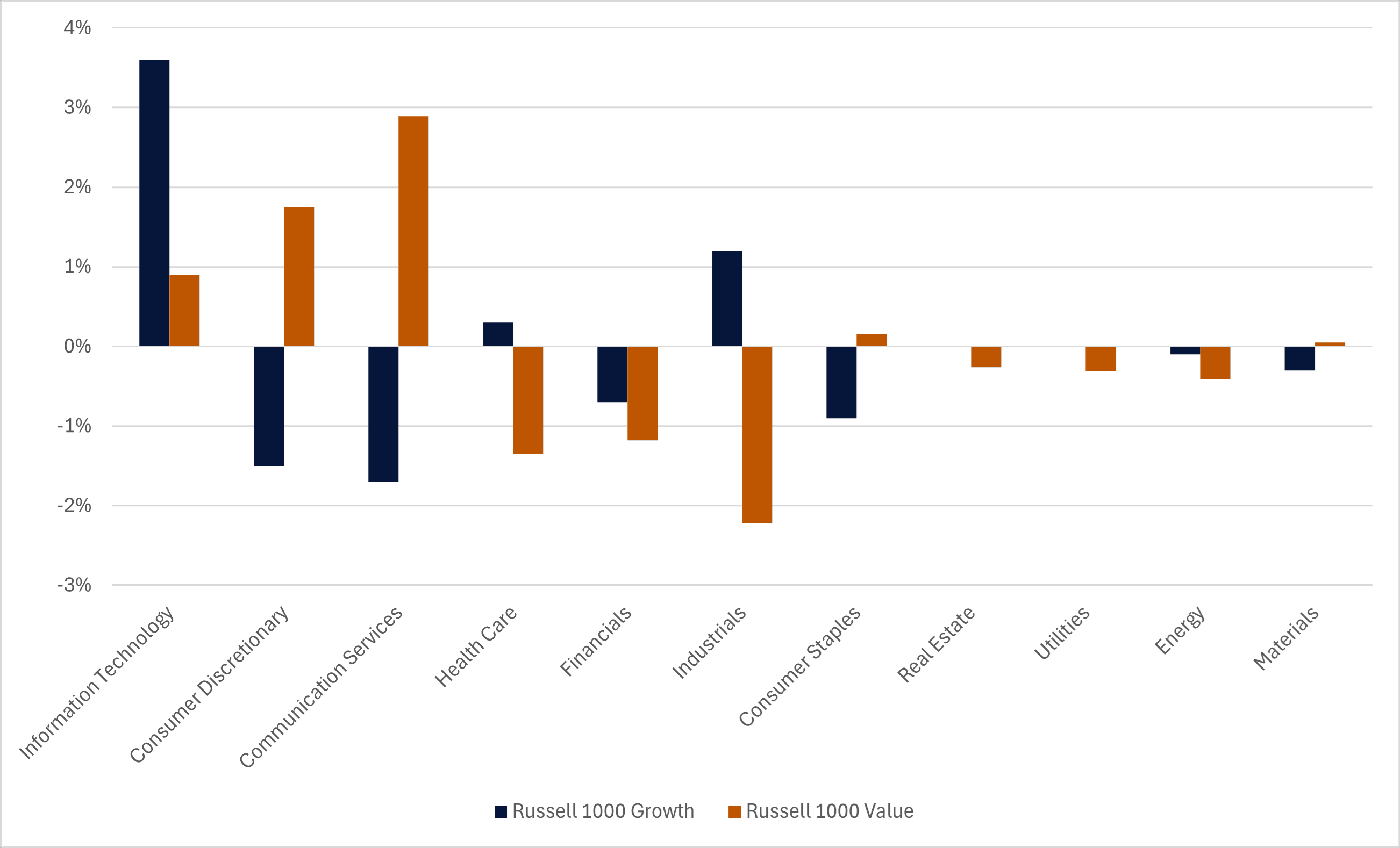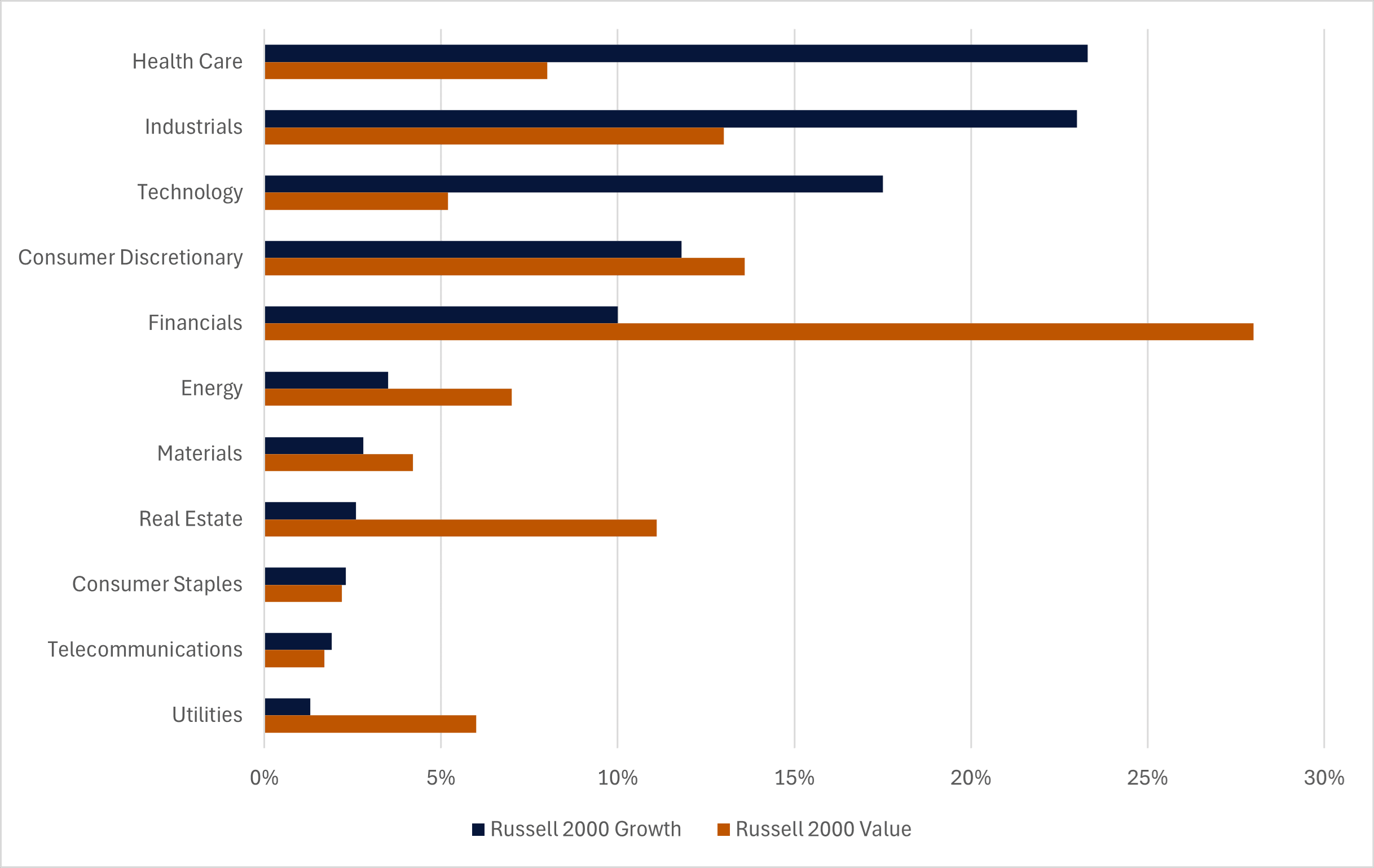What is the Russell Reconstitution?
On Friday, June 27, FTSE Russell’s U.S. Indexes went through their annual reconstitution, effectively refreshing the breakdown of equities by market capitalization (cap) (large, mid, and small) and investment style (value and growth) that make up FTSE Russell’s , which broadly represents roughly 96-98% of the investable US equity market.
Because markets change throughout the year, the criteria that defined stocks by market cap and investment style at the prior reconstitution (June 28, 2024) may no longer apply. The reconstitution is one of the year’s heaviest trading days as asset managers adjust their portfolios to reflect changes in the newly-reconstituted Russell indexes, to which approximately $10.6 trillion in assets are benchmarked. This year, a record 2.5 billion shares, representing a notional value of $102.4 billion in securities, traded in a span of 0.9 seconds.
Russell 1000: Scaling New Heights
This year, there were some notable changes among some of the underlying components of the Russell 3000. The Russell 1000 Index (Russell 1000), which is comprised of the largest 1,000 domestic stocks by market cap, added 37 new stocks to the index, with 19 of those moving up from the (Russell 2000), which is comprised of the next largest 2,000 domestic stocks by market cap. The majority (17) of the remaining companies (18) that joined the large cap index came as new additions to the Russell Index universe, including two initial public offerings (IPOs) (Sailpoint Inc (NASDAQ:) (SAIL) and Karman Holdings Inc (NYSE:) (KRMN)). Additionally, a micro-cap stock outside the Russell 3000, but inside the Russell universe, leap-frogged its way into the Russell 1000 (Core Scientific Inc (NASDAQ:) (CORZ)). To make room for the 37 additions, 25 stocks were relegated to the Russell 2000.
Additional highlights from this year’s Russell 1000 reconstitution include:
The top 10 constituents of the Russell 1000 by market cap now make up nearly $18 trillion of the $55.7 trillion in index assets, representing nearly a third (32%) of the total index.
The seven largest constituents of the Russell 1000 all trade at a market cap above $1 trillion, with one company exceeding $3 trillion—nearly at the $4 trillion threshold by end of April two companies above $2 trillion, and the remaining four companies above $1 trillion – up from six companies above $1 trillion in 2024
The information technology sector remains the largest sector by a wide margin, making up nearly 35% of the index, followed by consumer discretionary (15%) and industrials (13%).
Six of the 11 sectors each represent less than 5% of the index (consumer staples, energy, utilities, real estate, telecommunications, and basic materials) highlighting a lack of sector breadth.
The difference between the largest company ($3.2 trillion) and the smallest company ($2.0 billion) marked an all-time high in the disparity from top to bottom ($3.198 trillion).
Notable stock additions: Super Micro Computer Inc. (NASDAQ:), DraftKings Inc. (NASDAQ:), Duolingo Inc. (NASDAQ:), Roku Inc. (NASDAQ:), and Rivian Automotive Inc. (NASDAQ:) – all from either the technology or consumer discretionary sector.
Notable stock removals: Beyond Meat Inc. (NASDAQ:), Plug Power Inc. (NASDAQ:), Lucid Group Inc. (NASDAQ:), Nikola (OTC:) Corporation (NKLA), and FuboTV Inc. (NYSE:).
Large Cap Growth vs. Value
In addition to the cap size reshuffling, the Russell US Style indexes (Russell 1000 Value Index and Russell 1000 Growth Index) reconstituted, with growth stocks continuing to gain market share relative to their value stock peers following stellar performance over the preliminary reconstitution window.
From the 2024 reconstitution’s preliminary rebalancing window (April 30, 2024) to the 2025 reconstitution’s preliminary rebalancing window (April 30, 2025), growth stocks, as measured by the Russell 1000 Growth (Russell 1000 Growth) Index, rose 14.5%, versus value stocks, as measured by the Russell 1000 Value (Russell 1000 Value) Index, increasing 8.6%. Traditional growth industries such as information technology and consumer discretionary propelled growth stocks higher, lifted by artificial-intelligence (AI) enthusiasm and a resilient consumer. More traditional defensive industries, such as healthcare and consumer staples, lagged the index and broader markets.
Within the Russell 1000 Growth, information technology remained the largest sector of the index by a significant margin, rising from 47.6% on May 31, 2025, to 51.2% as of June 30, 2025. Consumer discretionary and communication services were the second and third largest sectors, respectively, although their combined weight of roughly 25% made up less than half of the information technology sector’s cap weighting, highlighting the increased concentration of the growth index.
In contrast, the Russell 1000 Value maintained a more uniform distribution across sectors, with financials being the largest sector constituent at 22.5%, a slight decrease from the 23.6% at the end of May. Following financials were industrials, healthcare, and information technology, each representing somewhere between 10-13% of the index. The “Information Technology Leads the Pack; Financials Struggle to Keep Up” chart highlights the year-over-year sector changes for the Russell 1000 Growth (blue) and the Russell 1000 Value (orange):
Information Technology Leads the Pack; Financials Struggle to Keep Up
 Source: FTSE, LPL Research, 6/30/2025
Source: FTSE, LPL Research, 6/30/2025
Russell 2000: The Decline Continues
The Russell 2000 Index () in terms of total market cap decreased meaningfully from last year, as small caps underperformed their large cap peers. The market cap of the Russell 2000 fell to $2.7 trillion, down 7% from the $2.9 trillion the year before. While small caps remain significantly smaller than the $56 trillion large cap market, the Russell 2000 still stands as a major global equity market — larger than the entire equity markets of France, Germany, Canada, and Australia. In fact, if treated as a standalone market, the Russell 2000 would rank as the sixth largest in the world, trailing only the U.S. Russell 1000, China, Japan, the United Kingdom, and India.
This year’s reconstitution brought 236 new additions to the Russell 2000, including 25 companies that moved down from the Russell 1000 and 129 that moved up from the Russell Microcap Index. The remaining additions came from outside the Russell universe or were recent IPOs. A total of 173 companies will depart the Russell 2000, with the majority (93) moving down cap into the Russell Microcap Index. In terms of sector composition, the Russell 2000 remains more diversified than its large cap counterpart. While the Russell 1000 leans heavily into technology, the Russell 2000 is more evenly distributed, with financials, industrials, and healthcare each representing between 15% and 20% of the index.
Small Cap Growth vs. Value
Similar to their large cap counterparts, small cap growth stocks outpaced value, as growth stocks, measured by the Russell 2000 Growth (Russell 2000 Growth) Index, gained 2.4%, while value stocks, as measured by the Russell 2000 Value (Russell 2000 Value) Index, slid 0.7% over the preliminary reconstitution window (April 30, 2024 to April 30, 2025). Within the Russell 2000 Growth, healthcare remained the largest sector, despite slipping from 25.0% to 23.3% of the index. Following healthcare was industrials, technology, and consumer discretionary, largely mimicking the composition of the Russell 1000 Growth index, albeit less concentrated.
In the Russell 2000 Value Index, financials held the top spot — mirroring the Russell 1000 Value Index — but with a more pronounced dominance. Financials accounted for nearly 28% of the index, more than double the weight of the next two largest sectors, consumer discretionary and industrials, respectively. This highlights a notable concentration within the value segment of the small cap universe. The “Small Cap Growth Sector Composition Largely Mimics Large Cap Growth Counterparts” chart highlights the ending sector composition of the Russell 2000 Growth and Russell 2000 Value Indexes following the reconstitution:
Small Cap Growth Sector Composition Largely Mimics Large Cap Growth Counterparts

Source: FTSE Russell, LPL Research, 04/30/2025
Conclusion
So, what does the Russell reconstitution mean for your portfolio? While many stocks were reclassified due to the reconstitution, turnover within indexes remained relatively muted, which is typical of past reconstitutions. Also, the uptick in volatility on reconstitution day has come down in recent years, as FTSE Russell releases preliminary changes nearly two months in advance, allowing institutional investors and traders the ability to adjust their portfolios ahead of time. We believe it is important to understand why Russell reconstitutes their indexes and how the style and sector indexes are composed after reconstitution. However, the best course of action may be to stay the course.
For investors considering adjustments to their portfolios following these changes, we suggest staying patient while keeping in mind that volatility may pick up over the next few weeks around tariff headlines, incoming inflation data, the upcoming earnings season, and historical seasonal weakness.
***
Important Disclosures
This material is for general information only and is not intended to provide specific advice or recommendations for any individual. There is no assurance that the views or strategies discussed are suitable for all investors. To determine which investment(s) may be appropriate for you, please consult your financial professional prior to investing.
Investing involves risks including possible loss of principal. No investment strategy or risk management technique can guarantee return or eliminate risk.